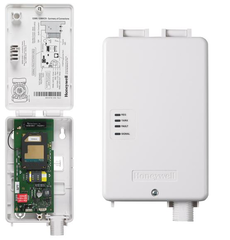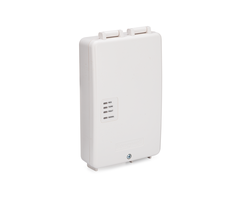Honeywell LTE-XA vs LTE-XV
Two of the most popular cellular communicators for Honeywell VISTA Series Panels are the Honeywell LTE-XA and the Honeywell LTE-XV. From an end user's perspective, these modules both serve the exact same purpose. The only difference is that they communicate through different LTE networks.

The purpose of a cellular communicator is to allow an alarm system to communicate through a cellular network. The cellular radio will send out signals that reach the servers of an interactive service platform. From there, the interactive service platform will forward these signals to the proper destination. This is typically a central monitoring station or directly to the end user. As for the Honeywell LTE-XA and the Honeywell LTE-XV, both modules allow a Honeywell VISTA System to communicate with Honeywell's AlarmNet servers. These are the servers that host the Total Connect 2.0 platform.
The main difference between the Honeywell LTE-XA and the Honeywell LTE-XV is the cellular network that each module uses to forward signals to the Honeywell AlarmNet servers. The LTE-XA sends signals through the AT&T LTE Network, while the LTE-XV sends signals through the Verizon LTE Network. Both LTE networks are very fast and reliable, and they should continue to receive proper support from their respective service providers for many years to come. In fact, the majority of users will not notice any major performance differences between these two modules.
If a user is trying to decide between the Honeywell LTE-XA and the Honeywell LTE-XV, they should simply choose whichever network works best in their area. Both the AT&T LTE and the Verizon LTE Networks offer impressive coverage areas and reliable performance. But there may be some select areas where the AT&T LTE Network is more reliable, as well as others where the Verizon LTE Network is more reliable. The user should check the appropriate coverage maps and consider the performance of different cellular service providers in their area to make their decision.
However, one thing the end user should understand is that the communicator for an alarm system has nothing to with their personal cellular carrier. A user can have an AT&T Cellular Communicator for their alarm system, while also having a personal Verizon Phone. Or they could have a Verizon Cellular Communicator and a personal AT&T Phone. Basically, their personal phone plan does not matter here. By installing and activating a cellular communicator with their alarm system, a user is not signing-up for any type of service plan with AT&T or Verizon. Instead, all associated costs and fees for cellular service are included in the user's alarm monitoring plan. The end user just needs to make sure that their monitoring plan includes cellular connectivity.
Did you find this answer useful?
We offer alarm monitoring as low as $10 / month
Click Here to Learn MoreRelated Products


- Answered
